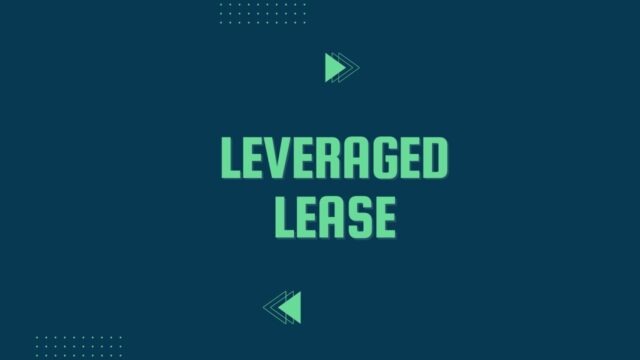
A leveraged lease, also known as a non-recourse debt financing, is an agreement between two parties that allows one party to use another’s property without purchasing it outright. It is often used by businesses and organizations that need to purchase or lease large, expensive items such as real estate, vehicles, or equipment. In this blog post, we will explain what a leveraged lease is and how it works.
How Does Leveraged Leasing Work?
A leveraged lease allows a company to rent property without fully paying for it upfront. Instead of making all the payments at once, the lessee will make smaller periodic payments over an agreed-upon length of time.
The lessor (owner of the property) provides security for the loan by holding the title to the assets or some other form of collateralization. This means that if the lessee defaults on their loan payments, the lessor can take possession of the leased assets and sell them in order to recoup their losses.
This also protects them from any potential lawsuit from creditors since they are not liable for any debts incurred by the lessee.
The main benefit of a leveraged lease is that it allows businesses and organizations to acquire assets without having to spend large amounts of capital up front or taking out traditional loans from banks or other lenders.
This type of financing also helps companies conserve cash flow and maintain liquidity while still being able to acquire necessary assets with minimal risk involved.
Additionally, because these leases are secured by collateral rather than personal credit history, this reduces the risk associated with defaulting on payments.
Tax Benefits of Leveraged Leasing
In addition to providing financial benefits for businesses, leveraged leasing can also provide tax advantages as well. Because these leases are considered “operating” expenses rather than capital expenditures, they may be deducted as business expenses on tax returns which can reduce taxable income significantly.
Additionally, depreciation deductions may be available on certain types of leased assets which further minimizes taxes owed by businesses and organizations who use these types of leases.
Conclusion
Leveraged leasing is an ideal option for businesses and organizations who need access to expensive equipment but don’t have enough money up front to purchase them outright or don’t want to take out traditional loans from banks or other lenders due to high interest rates associated with those loans.
Leveraging leasing can help businesses conserve cash flow while still gaining access to necessary assets with minimal risk involved as well as providing tax benefits such as depreciation deductions which can significantly reduce taxable income owed each year.
If you are considering using a leveraged lease in your business or organization, consider consulting with an experienced financial advisor before making any decisions in order to ensure that you get maximum value out of your lease agreement while minimizing risks associated with defaulting on payments or incurring additional costs due to unfavorable terms written into your contract.


































